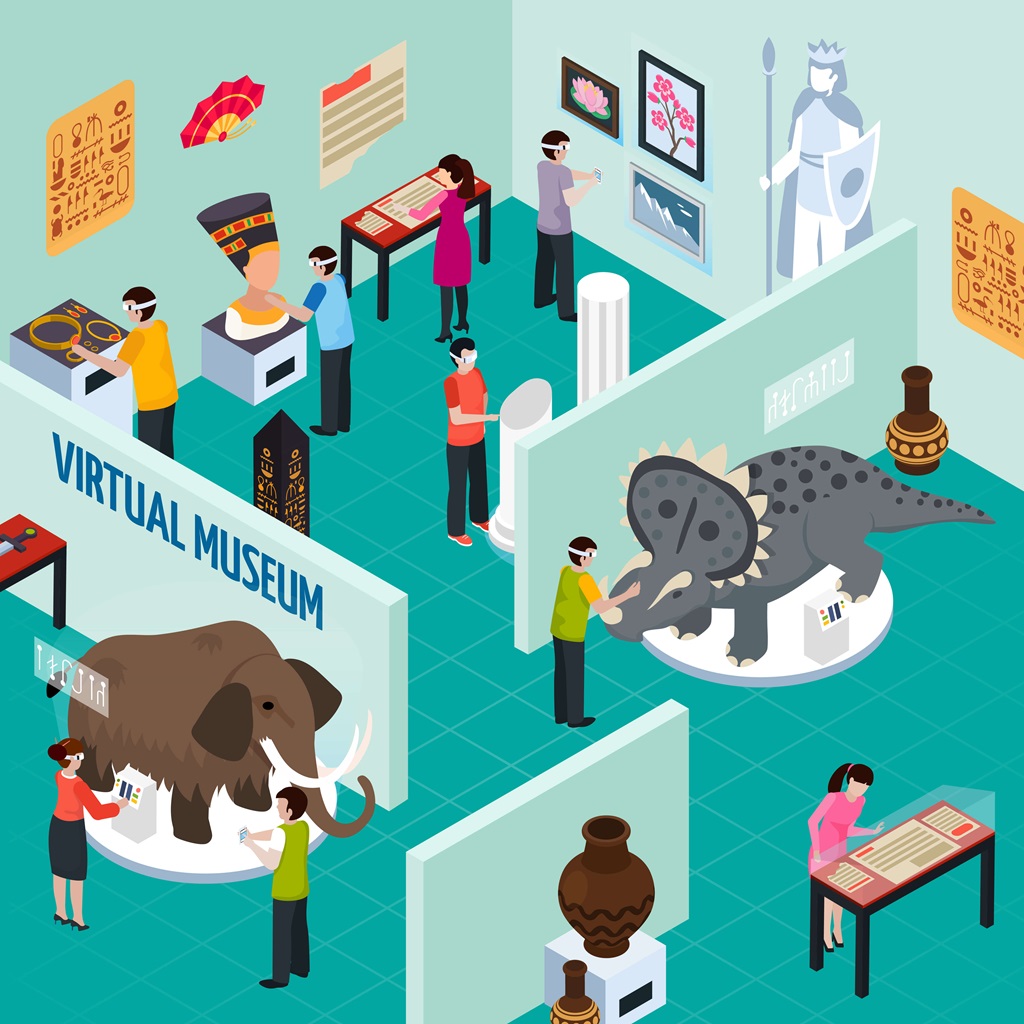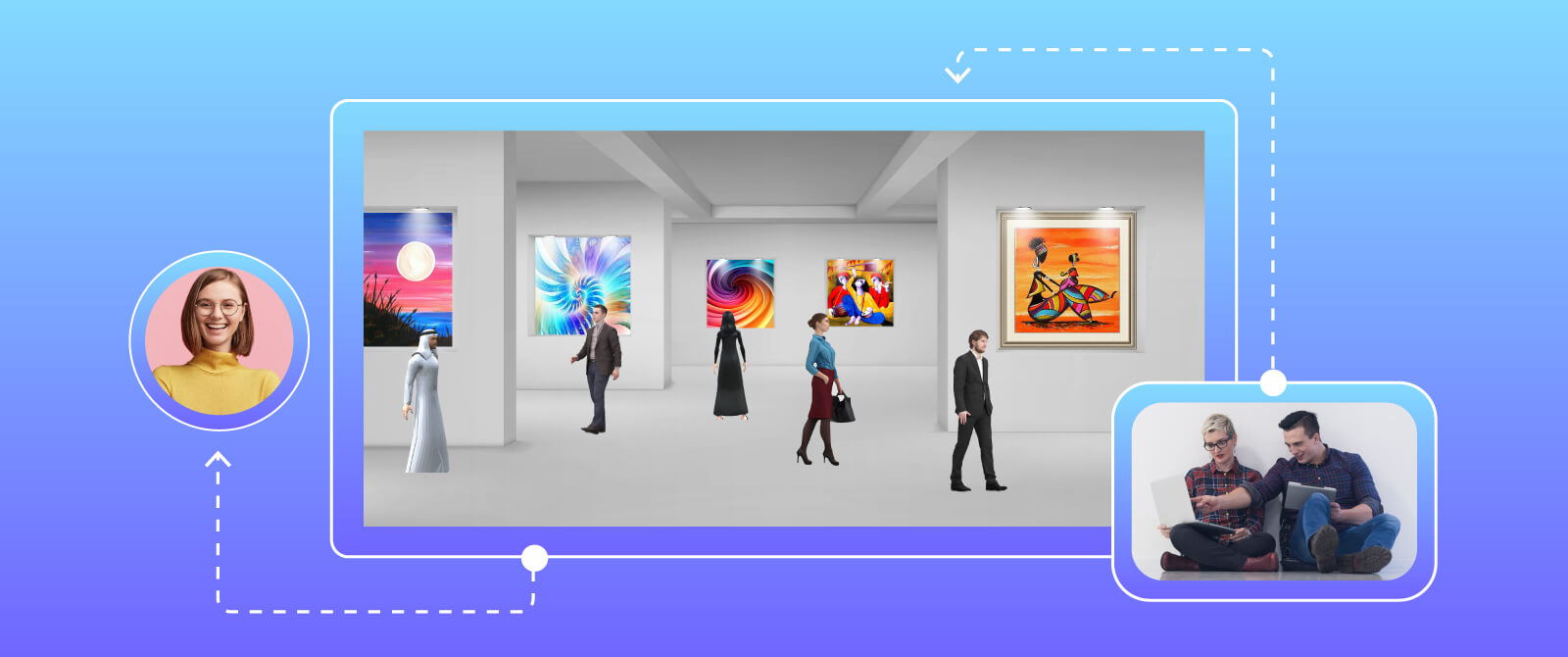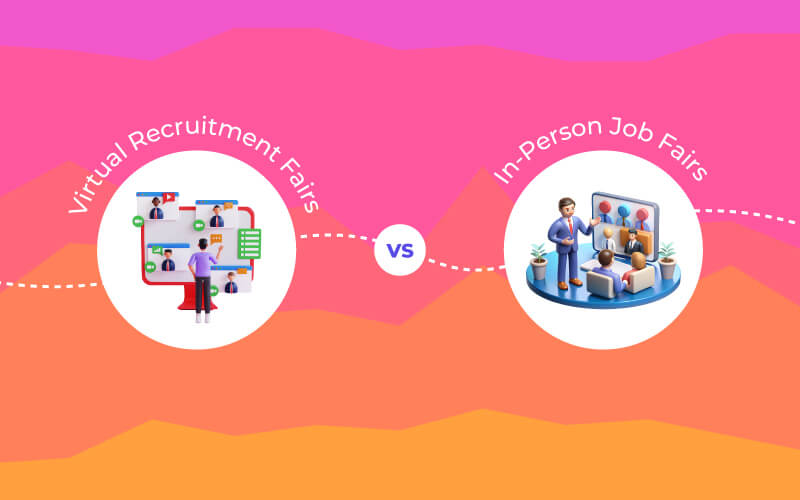Gone are the days of museum queues! No more velvet ropes and hushed tones. Virtual event platforms are shaking things up, letting you explore art from your own home. Art might be missing the crowds, but it’s thriving online as a virtual museum art gallery. This isn’t just about convenience – virtual experiences are changing how we connect with art, and even how museums make money. Let’s dive into the exciting world of virtual art galleries!
This blog post explores how virtual exhibition platforms have transformed art galleries and museums. Also, we’re going to delve into the top tips to consider while selecting a virtual service provider. So without further ado let’s start:
How are Virtual Art Gallery, and Museum Revolutionized by Virtual Event Platforms?
Here are the top nine ways in which virtual art platforms have transformed art galleries and museums.

- Global Reach: No more travel required! Explore virtual art gallery from anywhere with virtual tours and online exhibitions.
- Data-Driven Audience Engagement: Virtual platforms provide valuable data on visitor behavior and preferences. This data can be used by galleries and museums to customize their online offerings, personalize recommendations and create more engaging and relevant virtual art show experiences for their audiences.
- Engaging Learning: Museums can offer virtual programs and quizzes, making art history fun and accessible.
- Artist Spotlight: Virtual art shows give artists a wider platform to showcase their work to a global audience.
- Reimagining Exhibitions: Virtual platforms allow for creating thematic virtual exhibitions that transcend physical limitations. Galleries and museums can curate shows that combine artwork from different locations or periods, offering viewers a unique and enriching experience.
- Accessibility for All: Features like audio descriptions and virtual tours with Zoom functions make art accessible to everyone. As a result, it makes virtual art galleries more accessible to each participant.
- Interactive Exhibitions: Imagine 3D virtual exhibitions where viewers can see the artwork and interact with it. This could involve 3D models that allow viewers to rotate sculptures or augmented reality experiences that overlay historical context onto the artwork itself.
- Art on Demand: Virtual Museums gallery can offer curated online collections with specific themes or artists, making exploration easier.
- Support Local Artists: Many virtual art galleries support local artists in your area, allowing you to discover hidden gems.

How to Decide on a Virtual Event Platform for Your Art Galleries and Museums?
Virtual events are known for their expanded reach, accessibility, flexible content delivery, and of course, diverse audiences. Therefore, it’s essential to rely on a virtual event platform that leaves your attendees satisfied. Here are 10 special and much-needed features to consider while selecting your virtual event service provider:
Seamless User Experience:
Look for a platform that is intuitive and easy to navigate for both you and your attendees. This includes a clean interface, clear instructions, and mobile-friendliness to ensure everyone can participate effortlessly.
Engaging Content Delivery:
Go beyond static presentations! Choose a virtual art platform that offers interactive features like polls, quizzes, Q&A sessions, and breakout rooms to keep your audience engaged and actively participating.
Live Streaming & Recording Capabilities:

High-quality live streaming is crucial for delivering your event content. Look for a platform with reliable streaming options and the ability to record sessions for later access by attendees who might miss them live.
Robust Networking Opportunities:
Virtual events shouldn’t lack the valuable networking aspect. Consider platforms that offer features like virtual lobbies, video chat rooms, and one-on-one messaging to facilitate interaction between attendees and presenters.
Top-notch customization and Brilliant Branding
Your virtual event should reflect your brand identity. Choose a platform that allows for customization of the event interface, including logos, colors, and backgrounds, to create a cohesive and professional experience.
Monetization Options:
If you’re looking to generate revenue through your virtual event, consider platforms that offer integrated payment gateways and tools for managing ticket sales, sponsorships, and virtual booths.
Insightful Data & Analytics

It’s important to gauge your event’s success with comprehensive analytics. And for that rely on a platform that provides data on attendee engagement, session attendance, and feedback to help you improve future virtual events. Additionally, here’s the list of analytics you can track with a reliable virtual event service provider.
- Audience Characteristics
- Social Media Engagement
- Lead Generation
- Content Download Metrics
- Session Rating and Feedback
- Event Registration Source
- Session Chat Engagement
- Content and Presenter Ratings
- Sponsor Booth Engagement
- Networking Activity
- Attendee Interaction Metrics
- Feedback Surveys
- Account-Level Analytics
- Conversion Rate
- Net Promoter Score (NPS)
- Session Dwell Time
- Email Open and Click-Through Rates
- Technical Performance Metrics
100% Secure; 100% Safe
No one wants their data to be disclosed while streaming an event online. Therefore, data security is paramount. Choose a platform with robust security measures, including encryption and access controls, to protect attendee information and ensure a safe online environment.
Scalability & Reliability:
Your platform needs to handle your anticipated audience size. Look for a platform that can scale to accommodate a growing number of attendees and ensure smooth performance throughout the event. In any case, you don’t want to give your attendees a bad experience, therefore make sure to have complete reliability on the platform you’re choosing.
Integrations & Support:
Lastly, don’t forget to consider how the virtual event platform integrates with your existing tools and marketing strategies. Additionally, choose a platform with reliable customer support to assist you with setup, troubleshooting, third-party applications, and any questions that you might have. However, nowadays integration plays a crucial role in expanding reach and increased level of engagement too.
By prioritizing these features, you can select a virtual event exhibition platform that empowers you to create engaging, informative, and successful virtual experiences for your audience.
Conclusion
Forget dusty museums – virtual art show is exploding online! Virtual tours and cool online shows are letting everyone explore art from anywhere, no plane ticket needed. This isn’t just about convenience, it’s about making art more fun and accessible for everyone. But don’t worry, virtual experiences won’t replace real museums. They’re more like teammates! Imagine zooming in on details at the Louvre(museum) online, then seeing the real thing later with a whole new understanding. The future of art is a mix of virtual and real, opening up tons of ways to explore, learn, and enjoy art. If you’re someone who’s looking for modern virtual event solutions then Dreamcast can offer you a variety of streamlined personalized solutions. Book your demo now or call us!








